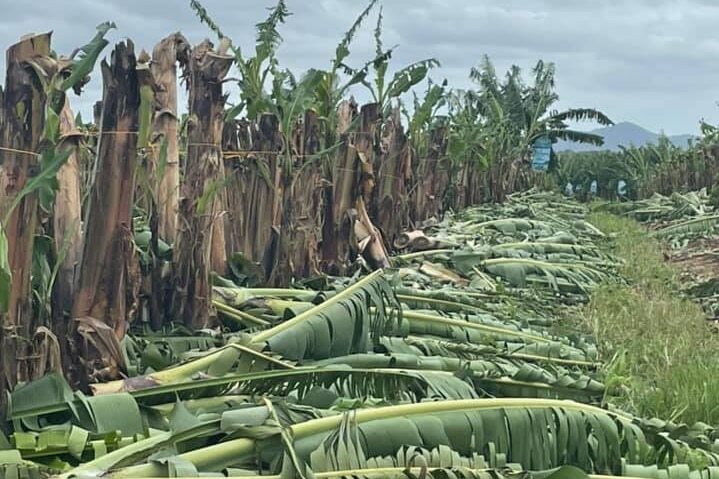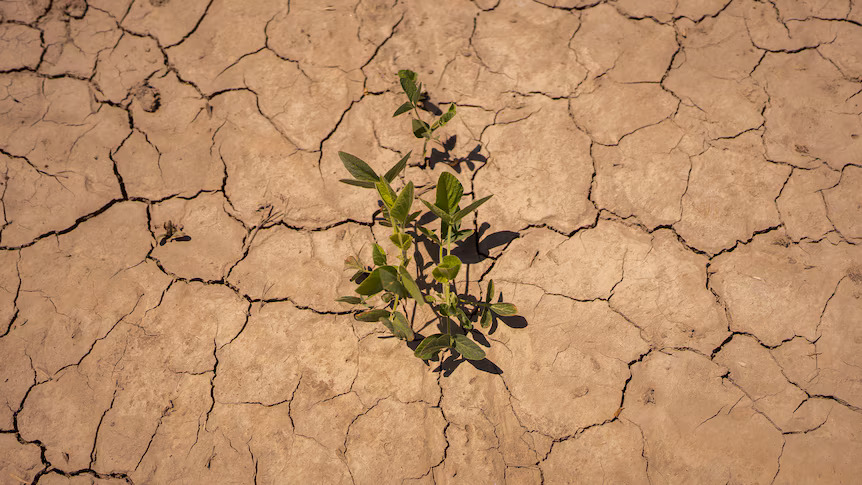Original publication by Pat Heagney, Tanya Murphy and Kallee Buchanan for abc.net.au on 21 July 2022

(Supplied: AgForce Queensland)
Farmers say a report outlining the deterioration of Australia’s environment fails to acknowledge the millions being spent to address the industry’s impact on the land.
The latest State of the Environment Report, written by 30 independent scientists from around Australia, found all areas of the nation — except urban environments — were in a “poor and deteriorating state”.
It also identified the intensification of agricultural and grazing industries as a major pressure, which it said reduced the natural capital of land through practices like clearing native vegetation, reducing carbon stores and increasing greenhouse emissions.
Key points:
- The intensification of farming has been identified as a key pressure on the environment
- Farmers say their industry’s ambitious carbon neutral goals have not been recognised
- Potential arises for farmers and Indigenous people to repair the damage
But Australian Beef Sustainability Framework steering group chair Mark Davie said the broad report did not reflect the complexity of land management practices used across the industry.
“It does create a very kind of negative and damning view of it,” he said.
“There isn’t a lot out there to positively measure things like biodiversity and so it relies very heavily on things like canopy change.
“We’ve got to ensure we provide a context for those conversations, because our forests are back to 1990 levels, and I don’t think the report really does that.”
Instead of just looking at broad data sets, he said the focus should have been on the work the industry was doing to tackle the issues.
“More and more, we’ve got to move from this high-level environmental kind of snapshots to outcomes on the ground, because that’s where I think agriculture will really shine,” he said.
“I just don’t know how we get that cut through to the community, because it’s literally probably $100 million a year that we’re [the beef industry] putting into this.”
Farmers feel impact
University of Sydney deputy vice-chancellor Emma Johnston, who was lead co-author of the report, said the impact of climate change had changed since the last report in 2016 from a future problem to one being felt by farmers and communities across the country.

(ABC News: Billy Cooper)
“The stark difference is we are documenting the impacts,” Professor Johnston said.
“When I say that I’m talking about droughts, floods, bushfires, storms, and heat waves — both on land and in the sea — and they are pushing systems to the brink.
“It’s having a profound impact not only on environments and species, but on human welfare and human wellbeing.”

(Supplied: Bartle Frere Bananas)
Terrain Natural Resource Management chair Keith Noble said the reality of that stark difference was very close to home at his Far North Queensland property.
“We’ve had catastrophic flooding up and down eastern Australia and my own farm personally has been impacted by two category five cyclones within a five-year period,” Dr Noble said.
“I think if you talk to individual farmers, who are in touch with the land which sustains them and their product, we can all see individual changes that are occurring.”
He said farmers were aware of their changing environment and most were making adjustments.
“What climate change means is that things as we know it are going to be different,” he said.
Creating regenerative economies
Dr Noble said many agricultural businesses had recognised not only the need to care for natural assets, but also the opportunity that could provide.
“We’ve added in our new strategic plan a stream we call regenerative economies,” he said.
“It recognises the natural capital that underpins and sustains both our tourism businesses and agricultural businesses.”
He said natural assets needed to be looked after they couldn’t just be continually mined.
“In so doing, we also believe there’s real opportunity to diversify the regional economy and to provide jobs for people working in that field, particularly for First Nations people,” he said.
“We’re seeing it happen in expansion of cultural ranger programs.”
Mr Davie said there were plenty of ambitious programs already under way to protect the environment, such as the beef industry’s commitment to be carbon neutral by 2030.
“It is so enormous, that an industry that covers 60,000 businesses would come up with this thing,” he said.
“Around the world, other areas just look at it and think, wow, these guys are really ambitious, they’re really focusing their research.”
Mr Davie said discussions about the environmental impact of farming needed to be weighed against the demands for agriculture production.
“It talks very much about agriculture and it’s impact on the environment without balancing that with that requirement to feed people,” he said.
“It’s how do we balance that conversation of the environment, productivity and food security, and deliver the best outcomes across that kind of three-legged stool.”

(ABC News)
Professor Johnston said the document did report successful on ground actions, and while the condition of the environment was deteriorating, there were reasons to be hopeful.
“Including work of Indigenous rangers, of citizen science projects and restoration actions and that’s really quite inspiring,” she said.
She said the report used national data sets to assess the effectiveness of management in an effort to direct new action.
“We can better understand how rapidly things are changing and where we need to prioritise our support and restoration efforts,” she said.




